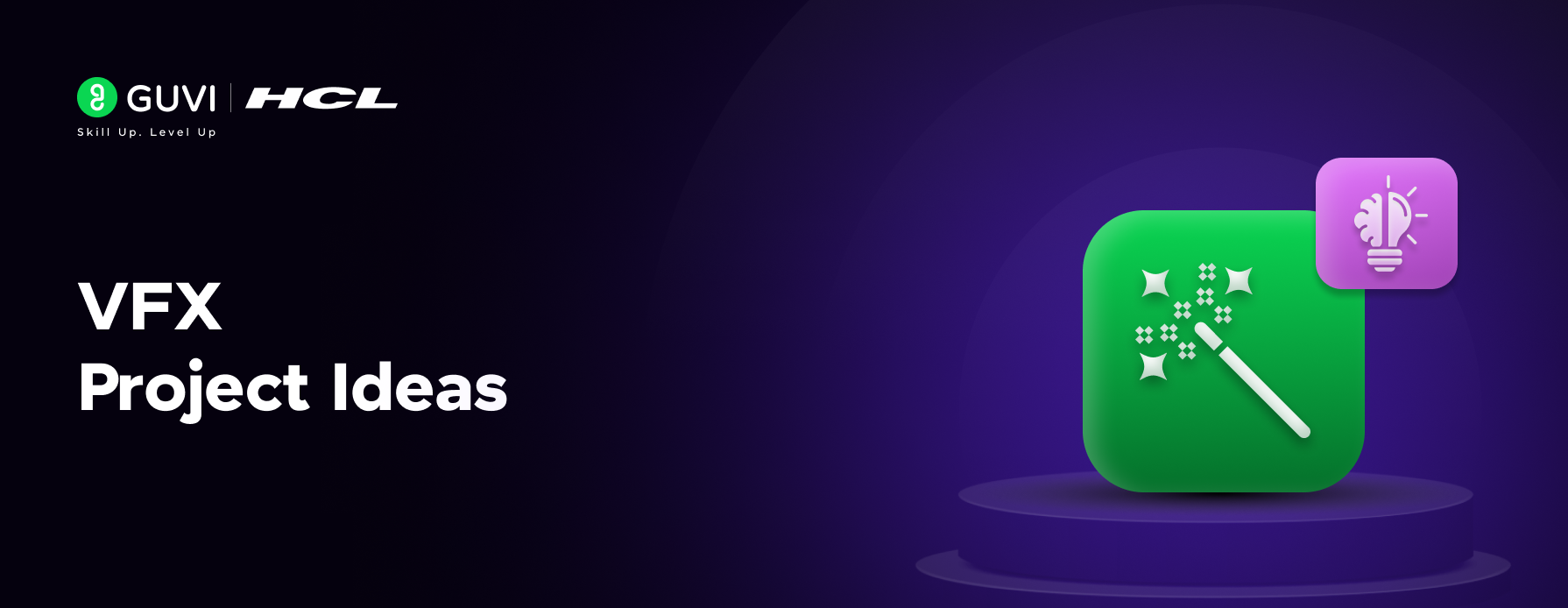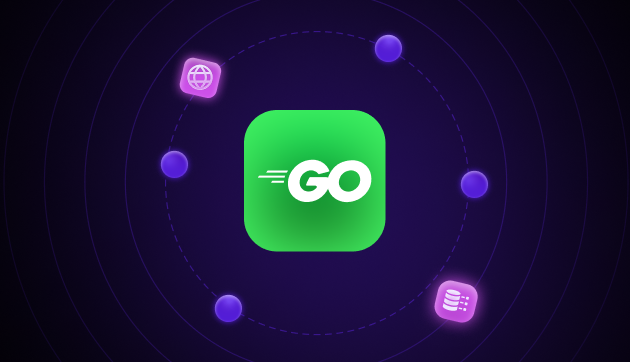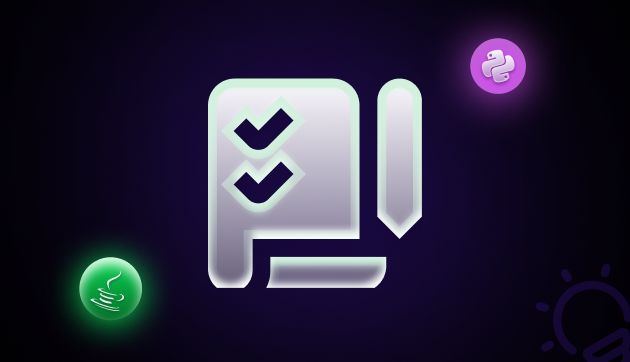![Project-Based Learning: Smart Ideas and Important Tips To Implement It [2025] 1 Post thumbnail](https://www.guvi.in/blog/wp-content/uploads/2024/05/feature_image.webp)
Project-Based Learning: Smart Ideas and Important Tips To Implement It [2025]
Jun 23, 2025 5 Min Read 10261 Views
(Last Updated)
Tired of the traditional learning method where you have to mug up all the lines of the book and vomit it out on the answer paper during exams? If you do that, you know nothing will stick in your mind.
So, what to do to learn subjects more effectively? That is where project-based learning comes into the picture. This helps you learn subjects practically rather than theoretically. This will make sure that the subject stays in your heart and you will remember it forever.
In this article, you will learn everything about project-based learning, and along with that, you will see some interesting project ideas as well as their general implementation.
So, without any delay, let us get started.
Table of contents
- What is Project-based Learning?
- Smart Project Ideas For Project-based Learning
- Full-Stack Development: School Portal Redesign
- Environmental Science: Community Sustainability Projects
- Mathematics: Market Stall Budgeting Project
- Technology and Computer Science: App Development Challenge
- Arts and Literature: Interactive Storytelling
- Implementing Project-Based Learning: A Step-by-Step Guide
- Step 1: Define the Project Scope and Objectives
- Step 2: Plan the Project Timeline and Milestones
- Step 3: Gather Resources
- Step 4: Integrate Technology
- Step 5: Evaluate and Reflect
- Why Project-Based Learning? Enhancing Education Across All Subjects
- Encourages Active Learning
- Builds Real-World Skills
- Enhances Retention of Knowledge
- Boosts Creativity and Innovation
- Promotes Personalized Learning
- Encourages Lifelong Learning
- Enables Technology Integration
- Conclusion
- FAQs
- Can PBL be used in any subject area?
- What are some key elements of a successful PBL project?
- How does PBL cater to different learning styles?
- What are some challenges of implementing PBL?
- What resources are essential for facilitating PBL?
What is Project-based Learning?
![Project-Based Learning: Smart Ideas and Important Tips To Implement It [2025] 2 What is Project-based Learning?](https://www.guvi.in/blog/wp-content/uploads/2024/05/what-is-project-base-learning-.webp)
Project-based learning (PBL) is a teaching method where students gain knowledge and skills by working for an extended period of time to investigate and respond to an engaging and complex question, problem, or challenge.
Instead of traditional, lecture-focused learning, project-based learning involves students in a hands-on approach where you create projects that have real-world applications.
This method encourages learning more actively and engagingly, helping you develop critical thinking, problem-solving, and collaborative skills while making the learning process more meaningful and enjoyable.
Read More: How To Learn Any Programming Language? This Will Help
Smart Project Ideas For Project-based Learning
![Project-Based Learning: Smart Ideas and Important Tips To Implement It [2025] 3 Smart Project Ideas For Project-based Learning](https://www.guvi.in/blog/wp-content/uploads/2024/05/smart_project_ideas_for_project_based_learning.webp)
We saw what project-based learning is all about in the previous section, and in these sections, you will see project ideas that will help you learn specific subjects.
Project-based learning can transform the educational experience by linking what you learn in school or college to the real world.
Let’s delve into some of the detailed, innovative project ideas across various subjects to illustrate how project-based learning can be effectively implemented.
1. Full-Stack Development: School Portal Redesign
The first subject that we are going to see is Full-stack development, as it is one of the hottest trending subjects across the world. You can easily learn full-stack development by designing your school portal.
If you want to learn more about full-stack development and strengthen your basics, consider enrolling for a professionally certified online Full-stack Development course by a recognized institution that can help you understand all the nuances of Full-stack development along with an industry-grade certificate.
You could take on the task of redesigning the school’s web portal. Things you need to keep in mind are:
- Front-end development: Enhancing the user interface with HTML, CSS, and JavaScript.
- Back-end development: Improving the server, database, and application logic with technologies like Node.js and MongoDB.
This comprehensive project introduces students to the layers of web development and the complexities of creating a functional, user-friendly site.
Learn More about HTML and CSS through an online course.
2. Environmental Science: Community Sustainability Projects
You can also do some good for the environment and your surrounding community by building sustainability projects.
You can work on creating a sustainable model for your local community. This could involve:
- Designing a community garden: Planning the layout, choosing plants suitable for the local climate, and learning about sustainable farming techniques.
- Developing a local recycling program: Investigating current recycling practices, identifying gaps, and proposing improvements.
These projects will help you understand ecology, sustainability, and the importance of conservation efforts.
Also Explore: Top Social Impact Project Ideas for Students
3. Mathematics: Market Stall Budgeting Project
What’s a better way to learn mathematics than putting it to use by doing precursor budgeting for a business? That is what you are going to do with this budgeting project.
In this practical project, you could manage a virtual market stall:
- Setting prices and budgeting: You have to calculate costs, set prices, and predict profits by analyzing the trends.
- Stock management: Analyze sales data to manage inventory efficiently.
This real-world application of mathematics teaches you a lot about financial literacy and basic business economics.
Also Read: 8 Exciting Project Ideas for Final Year B Tech Students [2025]
4. Technology and Computer Science: App Development Challenge
In this project, you will develop an application from scratch, focused on a community need or school-related theme:
- Learning to code: Using languages like Python or JavaScript to build the app.
- Testing and feedback: Iterating based on user feedback to improve the application.
This not only sharpens coding skills but also teaches about user experience and software development cycles.
Learn More: Web Development vs App Development: An Intense Analysis
5. Arts and Literature: Interactive Storytelling
In order to fastly learn about arts and literature, you could create an interactive story or a small video game that involves narrative elements:
- Writing: Crafting the plot, character profiles, and dialogues.
- Art and design: Creating visuals and animations that complement the story.
This fusion of creative writing and digital design skills makes literature more engaging and interactive.
Through these detailed and subject-specific projects, you gain a richer, more engaging educational experience that not only teaches academic content but also prepares you for real-world challenges.
Explore: Top 10 Unique Project Ideas for College Students
Implementing Project-Based Learning: A Step-by-Step Guide
![Project-Based Learning: Smart Ideas and Important Tips To Implement It [2025] 4 Implementing Project-Based Learning](https://www.guvi.in/blog/wp-content/uploads/2024/05/implementing_project_based_learning_a_step_by_step_guide.webp)
So, you now have some smart ideas for project-based learning but how to implement those is what we are going to see in this section.
Here’s a detailed guide on how to implement project-based learning across various subjects:
Step 1: Define the Project Scope and Objectives
Every project starts with clear goals. What do you want to learn? How can these skills be applied in real life? Understand what you are going to work on and focus on creating a plan with clear objectives before jumping right into action.
Also Read: 10 Innovative Project Ideas for Students to Boost Creativity and Skills
Step 2: Plan the Project Timeline and Milestones
One of the important aspects of project-based learning is time management. Projects need a defined timeline that allows you to manage your time effectively.
Break the project into phases or milestones with each phase having a specific deadline and make sure that you complete those on time. This small breakdown of projects will constitute a bigger win.
Step 3: Gather Resources
Before starting a project, make sure that you have access to the resources you need, whether that’s materials, tools, software, or external expertise.
The reason for that is that if you fail to gather the necessary resources, you can’t complete the project and it will be a huge waste of time.
Explore More: Top 30 Creative Website Ideas For 2025
Step 4: Integrate Technology
Utilize all the technology in your hand to enhance learning and project management. Use tools that fit the subject matter and project needs.
Go all out in using these technologies as this will help you finish the task at hand faster and in an effective manner.
Step 5: Evaluate and Reflect
Assessment should be ongoing throughout the project. Gain feedback on both the process and the final product from your peers to know where you are lacking.
This will enhance your acceptance of criticism and help you stay with a leveled head throughout the project duration.
Keep in mind that implementing project-based learning involves careful planning and resource management.
Explore More: Real-life Projects for Developers and Computer Science Students [Source Code]
Why Project-Based Learning? Enhancing Education Across All Subjects
![Project-Based Learning: Smart Ideas and Important Tips To Implement It [2025] 5 Why Project-Based Learning?](https://www.guvi.in/blog/wp-content/uploads/2024/05/why_project_based_learning_enhancing_education_across_all_subjects1.webp)
Project-based learning is a powerful approach that aligns with how you naturally learn and interact with the world.
By focusing on projects, project-based learning not only encourages knowledge acquisition but also develops essential skills like problem-solving, collaboration, and critical thinking.
Here’s a closer look at why project-based learning is effective:
1. Encourages Active Learning
In traditional learning models, you often passively receive information from teachers and textbooks. Project-based learning turns this on its head by engaging you actively in your learning.
2. Builds Real-World Skills
Project-based learning prepares you for the challenges of the real world by developing practical skills that employers value. These include leadership, teamwork, and the ability to present and defend ideas effectively.
3. Enhances Retention of Knowledge
As I mentioned at the start, if you mug up and vomit the content in the exam, you won’t retain any knowledge. But when you learn by doing, you are more likely to remember what you’ve learned.
The practical application of knowledge helps cement the learning as you see the relevance of your studies to real-world scenarios.
4. Boosts Creativity and Innovation
PBL encourages you to think creatively as you solve problems and develop projects. This can lead to innovative thinking and solutions that traditional methods might not inspire.
Also, Know About 7 Benefits of AI-Powered Learning Environments
5. Promotes Personalized Learning
PBL allows you to explore your interests within the framework of the subject matter. This personalized approach can increase engagement and motivation.
6. Encourages Lifelong Learning
By engaging with projects that you are genuinely interested in, you develop a love for learning that can last a lifetime. You learn how to learn, becoming more self-directed in your educational journey.
7. Enables Technology Integration
PBL naturally integrates technology by allowing you to use modern tools and resources to complete your projects. This is particularly evident in subjects like computer science and FSD.
- For Computer Science: Students might use coding platforms and digital collaboration tools to build a mobile app.
- For FSD: Learners could create a dynamic website using HTML, CSS, JavaScript, and backend technologies, incorporating databases and server-side scripting.
If you want to learn more about full-stack development through projects, then consider enrolling in
GUVI’s Certified Full-Stack Development Course not only gives you theoretical knowledge but also practical knowledge with the help of real-world projects.
Also Read: What is No-Code Development? Benefits & Examples
Conclusion
Project-based learning represents a transformative approach in education, shifting the classroom methods from traditional lecture-based teaching to engaging, real-world problem-solving.
By integrating projects that demand critical thinking, collaboration, and creativity, project-based learning not only enhances subject knowledge but also equips you with essential life skills such as communication, teamwork, and technological proficiency.
This method makes learning more enjoyable and relevant, preparing you to thrive in a complex, rapidly changing world. Ultimately, PBL empowers you to take charge of your learning journey, enabling a lifelong passion for discovery and innovation.
Must Explore: How to Make Amazing Projects for Internships and Placements? [2025]
FAQs
Yes, PBL can be effectively integrated across all subjects, from sciences and mathematics to arts and social studies, enhancing the relevance and application of learning in diverse areas.
A successful PBL project should have clear objectives, practical relevance, opportunities for student choice, and incorporate both individual and collaborative tasks.
PBL allows for various types of learning activities such as hands-on tasks, visual presentations, and oral communications, catering to diverse learning preferences.
Challenges can include a need for extensive planning, managing diverse student needs, ensuring access to necessary resources, and aligning projects with curricular goals.
Essential resources include access to information technology, research materials, expert guidance, and adequate space for conducting projects.






















![Top 9 AWS Projects for Beginners with Source Code [2025] 6 aws project](https://www.guvi.in/blog/wp-content/uploads/2025/07/aws-project.png)





![Top 10 React Native Project Ideas [With Source Code] 10 React Native Project Ideas](https://www.guvi.in/blog/wp-content/uploads/2024/10/React_Project_Ideas.png)
![10 Unique Keras Project Ideas [With Source Code] 11 Keras Project Ideas](https://www.guvi.in/blog/wp-content/uploads/2024/10/Feature-Image.png)

Did you enjoy this article?